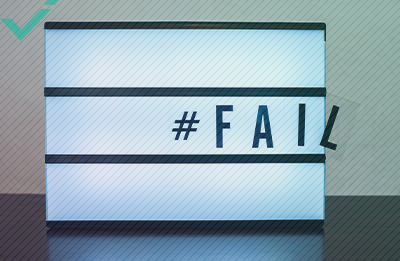For a long time, marketers have understood the sales process by breaking it up into 3 steps: stimulus, shelf, and experience. But new research shows that in today’s digital age, consumers have drastically changed the way they shop for everything, from groceries to car insurance. More specifically, marketers have observed that there’s now a 4th step to the sales cycle, in which customers research the product/services they’re interested in before moving on to the point of sale. This step has been coined the Zero Moment of Truth (ZMOT). In this post, we take a closer look at ZMOT, what it is, and what it means when marketing your small business.
WHAT IS THE ZERO MOMENT OF TRUTH?
In his 2011 ebook Winning The Zero Moment of Truth, Jim Lecinski (Professor of Integrated Marketing at Northwestern University) sums up ZMOT like this:
“A Zero Moment of Truth is:
- A busy mom in a minivan, looking up decongestants on her mobile phone as she waits to pick up her son at school.
- An office manager at her desk, comparing laser printer prices and ink cartridge costs before heading to the office supply store.
- A student in a cafe, scanning user ratings and reviews while looking for a cheap hotel in Barcelona.
- A winter sports fan in a ski store, pulling out a mobile phone to look at video reviews of the latest snowboards.
- A young woman in her condo, searching the web for juicy details about a new guy before a blind date”.
As mentioned above, classic marketing 101 divides the sales process into 3 steps or mental states: stimulus, shelf, and experience. Stimulus, as the name suggests, is the stage in which a customer first becomes aware of a product or service. Classic examples of this include seeing a product ad on TV or plastered across a billboard. Shelf, on the other hand, is when a customer sees a product at a point of sale, like on the shelf at a retail store or listed on a e-commerce platform. This stage of the sales process is typically known as the First Moment of Truth. Experience is the final step in the sales process, and is typically referred to as the Second Moment of Truth. This is when the customer takes the product home, experiences it, and shares their experience, be it positive or negative.
The Zero Moment of Truth first started to rattle the marketing industry’s cage in 2011 after Google and Shopper Sciences took a closer look at the buying process of 5,000 shoppers. The research observed the buying patterns of shoppers across 12 categories, including everything from groceries to motor vehicles. Before moving from stimulus to shelf, Google found that consumers underwent a crucial period of research. After hearing about a product, shoppers consulted up to 10 different sources before moving on to the shelf. They’d use these sources to get educated about the product and any possible alternatives, reading reviews and even comparison-shopping or looking for sales coupons and promotions to find the best deals. Google called this the Zero Moment of Truth. The ZMOT has been shown to be the most important part of the sales process, with over 80% of customers claiming that it’s the time when they finally decide on whether or not to buy a product.

HOW DOES THE ZMOT AFFECT HOW I MARKET MY SMALL BUSINESS?
If you’ve made it this far through the article, you’re probably wondering how ZMOT directly affects the way you market your business. One of the biggest impacts ZMOT has on your marketing strategy is this; it opens up a whole world of possibilities for targeting your customers. The discovery of the ZMOT shows us that customers today have thousands of different ways to find the products or services they’re looking for. “If there are 60 people in San Francisco right now looking for engagement rings and on the web trying to find out which brand or cut to buy, you have an ability to show up just in front of those 60 people”, explains Avinash Kaushik, Digital Marketing Evangelist for Google and author of two best-selling books on web analytics.
The simple fact that customers are taking the time to research products and services in the Zero Moment of Truth means you (the savvy marketer or small business owner) have the opportunity to connect with potential customers on a whole new level. Kaushik used the example of engagement rings, but you can really apply this to any other product or niche. Here’s an example of how the Zero Moment of Truth might affect me, a freelance writer, in my search for online payment solutions.
When I first started working freelance, one of the things I had to figure out was how to receive payments from my various clients (who often paid me in different currencies). My search began with a simple Google search for “online payment solutions”. Within seconds, I learned about some of the different brands offering the kind of services I was looking for. You can consider this the stimulus part of the sales process. I then began researching the different services available to me in more detail, paying attention to the fees involved, the different payment options each company provided, as well as extras like the possibility to accept payments in different currencies or receive a plastic Mastercard/Visa to use with my accounts. This is the Zero Moment of Truth, and the companies that managed to connect with me during this time definitely had an advantage over their competitors by informing my decision early on. After doing my research, I was left with a few main candidates whose websites and forums I checked out (this is the equivalent of the shelf aspect of the sales process) before settling on one (experience).
Think about your own shopping experiences and you’ll quickly see that the Zero Moment Of Truth has the most influence on your final buying decision. If you can connect with your customers during this stage and sway their decision in your favour, you have the potential to sustain a huge advantage over your competitors.

HOW CAN YOU PREPARE FOR THE ZERO MOMENT OF TRUTH?
If you want to remain relevant in today’s marketplace, your marketing campaign needs to be built with a strong focus on the Zero Moment of Truth. That isn’t to say you should just focus on this particular marketing mental state; instead, your strategy should target all 4 states simultaneously to give you the most leverage possible. We can dedicate an entire article to the process of developing a marketing strategy with ZMOT in mind (and we likely will in the future). For now, here are some brief pointers to help you start thinking about the ways in which you can tailor your campaigns to the new model of buying:
- Be part of the conversation. Marketing is no longer just about bombarding your customers with a message and hoping it sticks. Today, marketing is all about conversation and building relationships. Your strategy should be designed to interact and engage with your customers on multiple levels.
- Use ratings and reviews. Make sure that you encourage your existing customers to rate and review your product on your website, as well as on relevant third-party platforms. Why? Because one customer’s experience essentially becomes another’s ZMOT by helping them get informed about your products and services. Take these reviews seriously, respond to them in a timely fashion, and make sure to constantly check them and improve your product/service accordingly.
- Be customer-orientated. One of the best ways to take advantage of ZMOT is to answer as many questions your customers might have about your products as possible. A simple way to do this is to research common queries regarding your product/service online, then create quality content around those questions. Then, push traffic towards that content from search, social, email, and all your other marketing channels as well. Remember, customers are more likely to buy from companies that give them the best responses to their questions. Hence, make sure you target these potential questions with high-quality content.
- Read. To help you build a marketing strategy with ZMOT in mind, we highly recommend reading up on it in more detail. A good place to start is to download and read Lecinski’s Winning The Zero Moment of Truth.
As you can see, Zero Moment of Truth has completely changed the way we shop. It’s about time you let it change the way you market to your customers. At Yuqo, we specialise in helping small businesses like yours connect with customers at all stages of the buying cycle, including ZMOT. Contact us today for more info.


